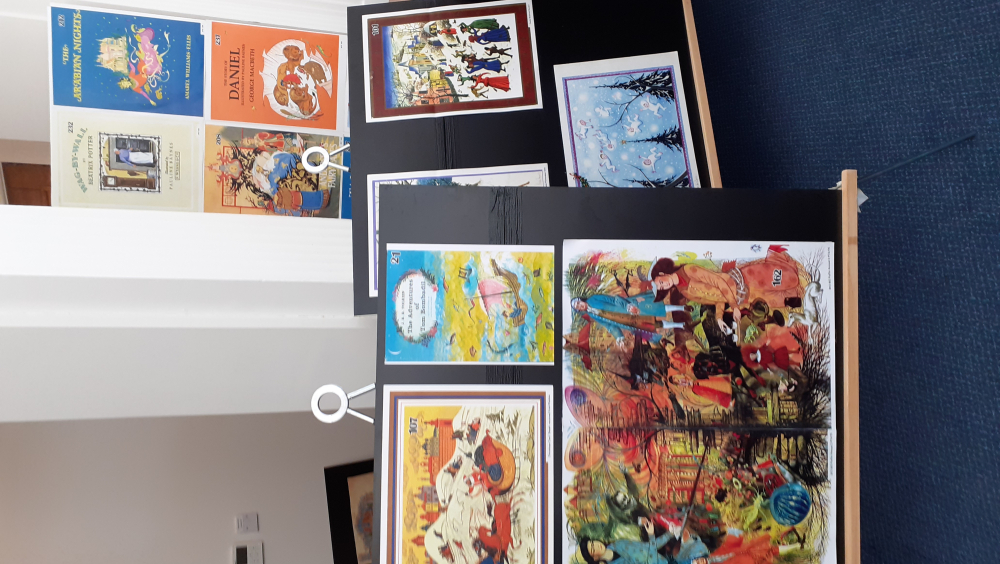Pauline Baynes – a local artist with European connections
Pauline Baynes was an artist who lived and worked in our town, Farnham in Surrey. She built a career illustrating some well known books. Through marriage she developed a European connection, first with Germany, then to her surprise with Italy.
The name Pauline Baynes may not be widely known but her works as an artist are familiar to many. She illustrated numerous books including the works of Tolkein and the Narnia chronicles.
As a child, Pauline lived with her mother and sister Angela in the Farnham area. She studied at the Farnham School of Art (which has since become the University for the Creative Arts). During World War II she and her sister worked at the Camouflage Development and Training Centre based at Farnham Castle. The Castle features regularly in Farnham’s Heritage Open Days. Pauline followed up contacts made during her time at the Castle and secured some professional commissions, which enabled her to build up a body of published work.
During the 1940s, samples of her work came to the attention of JRR Tolkien. She produced illustrations for his Farmer Giles of Ham, published in 1949, going on to illustrate other of his works. She maintained a friendship with Tolkien lasting until his death in 1973. It was through Tolkien that Pauline was introduced to CS Lewis. This led to her illustrating the Narnia chronicles.
In around 1960, Pauline moved into the village of Dockenfield, just outside Farnham. A salesman named Fritz Otto Gasch called at her cottage one day. German by birth, Fritz had been taken prisoner while serving in the German forces during WWII. He was held as a Prisoner Of War in Britain and had remained in Britain following the war. Pauline and Fritz were soon married. Fritz died in 1988.
Fritz had been married in Germany before the war, and had a daughter Karin from his first marriage. Following the war Fritz was unable to maintain contact with them, and did not know whether they had survived the war. Karin meanwhile had married Alberto Ceccatelli whom she had met while working in Italy. Together they searched for Karin’s father. With the fall of the Berlin Wall and the opening up of the Eastern Bloc, they succeeded in tracing Fritz to Farnham. So several years after Fritz had died, Pauline received a phone call from Karin. She, with Alberto and their children, developed a close family relationship with Pauline.
When Pauline died with no surviving children, her private collection of work passed to Karin and Alberto. The family continues to hold the collection*.
Alberto made contact with the Museum of Farnham in 2022. In September of 2023, he brought part of the collection over to Farnham. This was exhibited at the start of Farnham’s 2023 Heritage Open Days festival in the Town Council Chamber. An accompanying talk proved highly popular and it was necessary to relay the talk by video link to a second room in the Town Hall. Alberto must be congratulated for arriving just in time, following difficulties due to flight cancellations.
* Pauline Baynes’ private collection is not part of the formal archive, which is held in the USA.
There are several European elements to the story. Firstly the horrors of World War II and the reconciliation that followed, with Pauline marrying Fritz. Secondly European the connection between Germany and Italy leading to the marriage of Pauline's step daughter Karin. Finally, the cold war and oppression which prevented Karin from tracing her father Fritz, and the new found freedom and unity following the cold war, enabling the family connection to the UK and Pauline be established.
